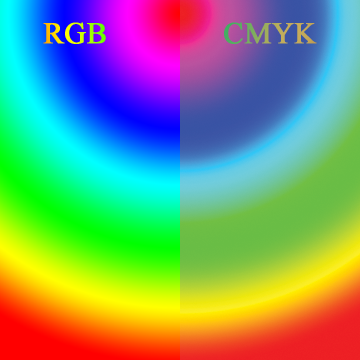Colour Spaces:
Colour Spaces are an abstract mathematical model describing how colours can be represented by numbers and computer algorithms that appear on the screen. These are usually numbers of three or four values or colour components of the colour models RGB and CMYK. Adding a creating a map between the colour model and the colour space, this is called a 'footprint' or a 'gamut' which in turn creates a new colour space. For example Adobe RGB and sRGB are two different colour spaces both based on the RGB Model.
There is a number of generic colour models which are; RGB, CYMK, YIQ, YpbPr, xvYCC, HSV (Hue, saturation, Value) and HSL (Hue, Saturation, Lightness). All models are primarily used for different things going from Graphics, Photographs, Film, Video, 3D and Vectors. These forms replaced old colour spaces RG (Technicolour film) and RGK (early printing).
Colours on the computer can also be describe without the use of one of these complex colour models. These are called colour books, which include Pantone.. which in effect are given a set of names or numbers which are defined by the existence of a corresponding set of physical colour swatches.

Comparison between RGB and CYMK colour spaces. The CMYK color gamut is much smaller than the RGB color gamut, thus the CMYK colors look muted. If you were to print the image on a CMYK device (an offset press or maybe even a ink jet printer) the two sides would likely look much more similar, since the combination of cyan, yellow, magenta and black cannot reproduce the range (gamut) of color that a computer monitor displays. This is a constant issue for those who work in print production. Clients produce bright and colorful images on their computers and are disappointed to see them look muted in print.
No comments:
Post a Comment
Note: Only a member of this blog may post a comment.